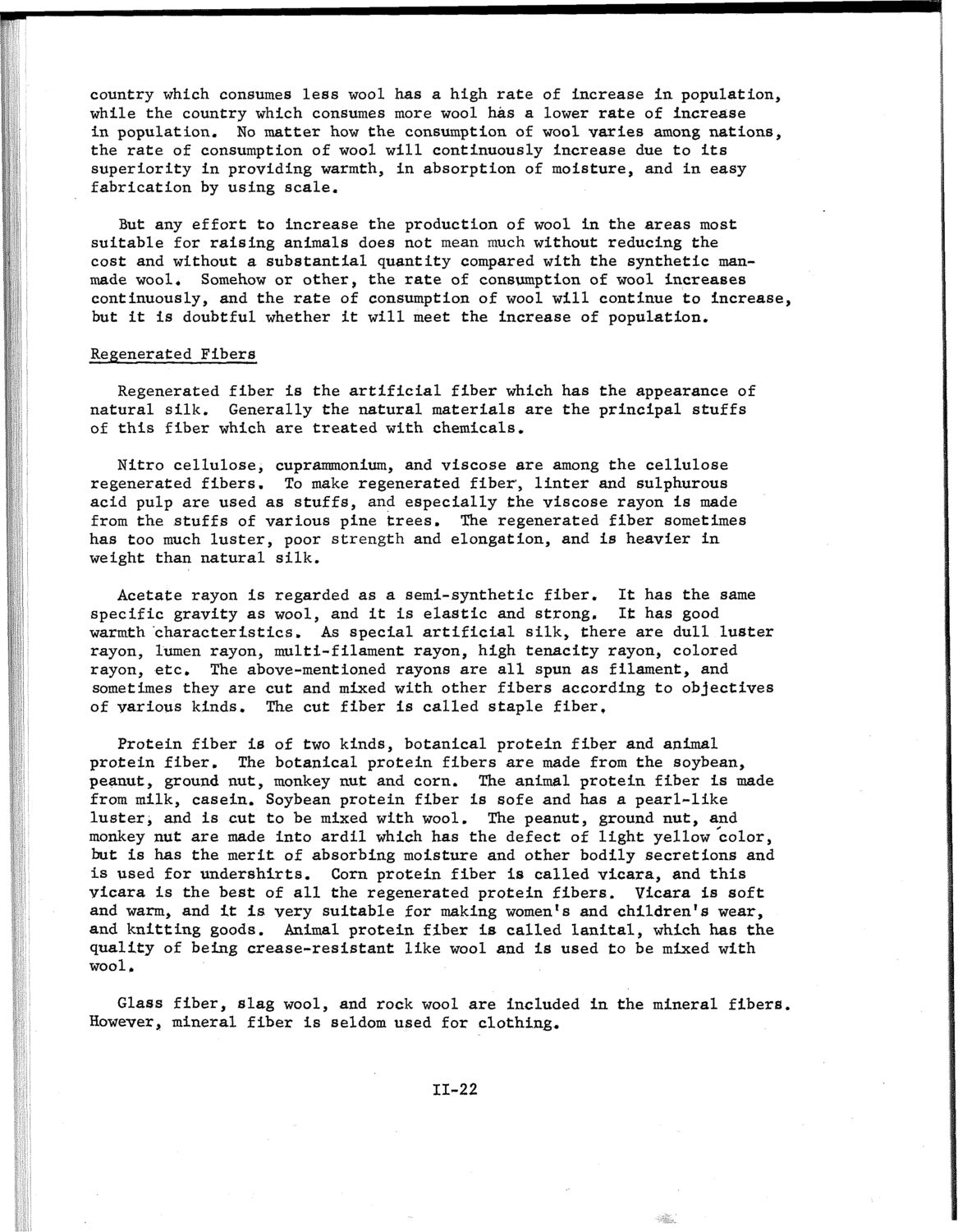| |
| |
Caption: SWE - Proceedings of the First International Conference of Women Engineers and Scientists
This is a reduced-resolution page image for fast online browsing.

EXTRACTED TEXT FROM PAGE:
country which consumes less wool has a high rate of increase in population, while the country which consumes more wool has a lower rate of increase in population. No matter how the consumption of wool varies among nations, the rate of consumption of wool will continuously increase due to its superiority in providing warmth, in absorption of moisture, and in easy fabrication by using scale. But any effort to increase the production of wool in the areas most suitable for raising animals does not mean much without reducing the cost and without a substantial quantity compared with the synthetic manmade wool. Somehow or other, the rate of consumption of wool increases continuously, and the rate of consumption of wool will continue to increase, but it is doubtful whether it will meet the increase of population. Regenerated Fibers Regenerated fiber is the artificial fiber which has the appearance of natural silk. Generally the natural materials are the principal stuffs of this fiber which are treated with chemicals. Nitro cellulose, cuprammonium, and viscose are among the cellulose regenerated fibers. To make regenerated fiber, linter and sulphurous acid pulp are used as stuffs, and especially the viscose rayon is made from the stuffs of various pine trees. The regenerated fiber sometimes has too much luster, poor strength and elongation, and is heavier in weight than natural silk. Acetate rayon is regarded as a semi-synthetic fiber. It has the same specific gravity as wool, and it is elastic and strong. It has good warmth characteristics. As special artificial silk, there are dull luster rayon, lumen rayon, multi-filament rayon, high tenacity rayon, colored rayon, etc. The above-mentioned rayons are all spun as filament, and sometimes they are cut and mixed with other fibers according to objectives of various kinds. The cut fiber is called staple fiber, Protein fiber is of two kinds, botanical protein fiber and animal protein fiber. The botanical protein fibers are made from the soybean, peanut, ground nut, monkey nut and corn. The animal protein fiber is made from milk, casein. Soybean protein fiber is sofe and has a pearl-like luster, and is cut to be mixed with wool. The peanut, ground nut, and monkey nut are made into ardil which has the defect of light yellow color, but is has the merit of absorbing moisture and other bodily secretions and is used for undershirts. Corn protein fiber is called vicara, and this vicara is the best of all the regenerated protein fibers. Vicara is soft and warm, and it is very suitable for making women's and children's wear, and knitting goods. Animal protein fiber is called lanital, which has the quality of being crease-resistant like wool and is used to be mixed with wool. Glass fiber, slag wool, and rock wool are included in the mineral fibers. However, mineral fiber is seldom used for clothing. 11-22
| |